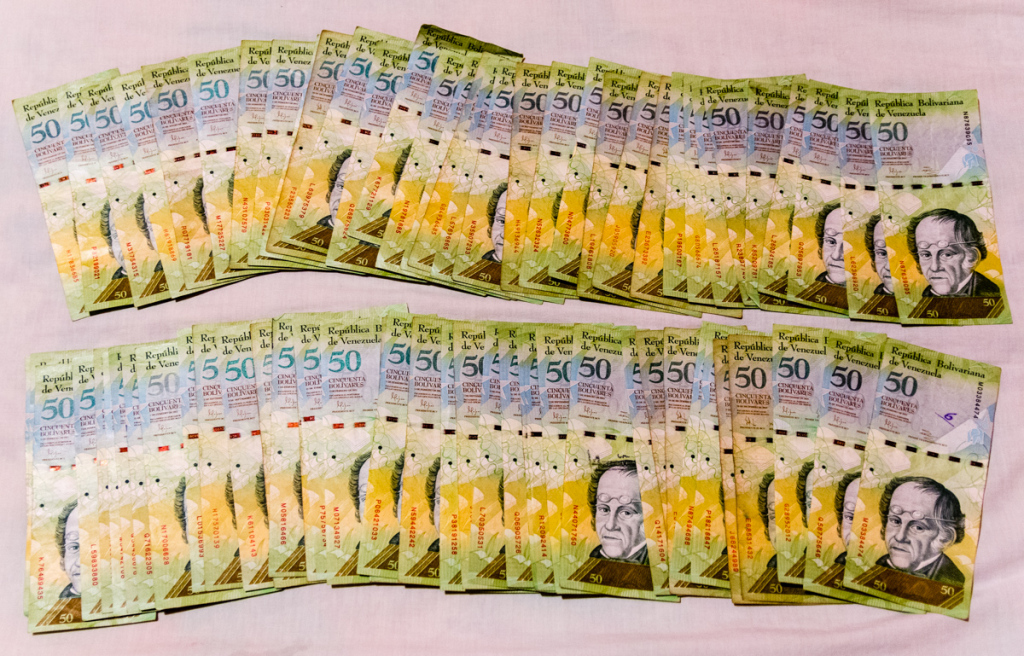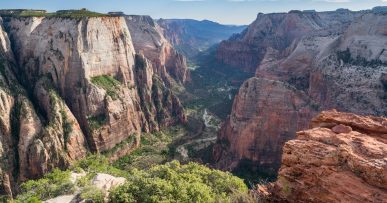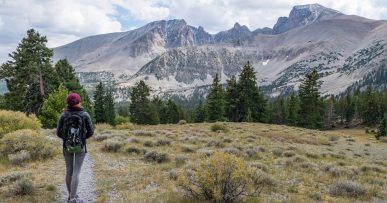- Heading to the World Cup Final in Rio
- Heartbreak at the World Cup Final
- A Week in Rio de Janeiro
- Ilha Grande, Paradise with Good Company
- A Quick Stop at Paraty, Brazil
- Sao Paulo, And an Amazing Hostel
- Curitiba, Brazil
- Serra Verde Express – Morretes to Curitiba
- Energetic and Hectic Salvador, Brazil
- The Amazing Chapada Diamantina in Brazil
- Absent-mindedness and Kind Strangers
- Rainy Days on The Beaches of Boipeba
- Lazy Days in Jericoacoara
- Manaus, At The Heart of The Amazon
- Crossing The Brazil-Venezuela Border
- In Review: 61 Days of Backpacking in Brazil
I had been trying to decide for a long time whether I should visit Venezuela or not during this trip. I was always very intrigued by Angel Falls and Mount Roraima, maybe more than any other place in South America, but the bad economic and social situations made me doubt whether I should take the risk or not.
Through almost five months of travel, I hadn’t met anybody who had been to this country, and some of the online information painted a very unsafe situation where you could even get robbed by cops.
While lounging in Jericoacoara I decided that my urge to visit the two landmarks mentioned above outweighed everything else, so a decision was made that I’d travel north from Manaus into Venezuela. I found a blog post detailing this same exact border crossing, and that account got rid of most of my worries.
Two nights ago, I boarded the 8pm Eucatur bus from Manaus and arrived at Boa Vista (3 hours from the border) a little bit after 7am. The 11-hour bus ride wasn’t too bad, I must have slept a good 8 hours. Apparently there are some buses that go directly past the border, but I couldn’t find one while booking online. Eucatur is the only Brazilian bus company I have encountered so far that let me book seats online without a CEP number, which is their national ID number.
After inquiring around in Boa Vista, I found out that the bus going to the border town of Pacaraima had already left at 7am, and the next one would be at 3pm. I was told that the other option is to take a shared taxi, costing R$35. To do this I had to take another local taxi to the “Terminal”, which is a different terminal but only for taxis. This 10 minute taxi cost me R$20! When I arrived at the other station, I saw a bunch of official taxis lined up, each of them with their destination painted on the side. Seems like they are official ones, which made me feel much safer taking them. The drivers also wear a shirt with both the Brazilian and Venezuelan flags on them. Apparently there’s some sort of agreement between the countries to let these official taxis flow freely though the border.
I was approached right away by a driver asking me if I was going to Pacaraima. He confirmed that it was R$30 to go there, and R$35 to the Venezuelan town of Santa Elena de Uairen, which was my final destination. Very reasonable prices for the 3-hour drive. He told me that he needed one more passenger in addition to me before we could leave. I quickly grabbed a salgado (salty pastry) and we departed not before long. I shared the taxi with a girl from Venezuela, and 3 other Brazilians. As on buses and everywhere else in Brazil, the air conditioning was on full blast. Brazilians love to set their A/C to uncomfortably cold levels. The driver was driving like madman, sometimes hitting 90mph. The scenery was very flat for the most part, but it turned hilly towards the end.
The first stop at the border was at the Policia Federal building, where I got from Brazilian exit stamp. The friendly guy at the counter asked me what I did during my almost two months in Brazil, and asked me what was my favorite part of it. Jericoacoara and Chapada Diamantina I answered. As I crossed the border, I experienced great excitement along with a little bit of fear. I was getting off the beaten path, and going somewhere where most travelers are not going (at least in the past few years). I don’t think I had been this excited during this trip except when I went to the World Cup Final.
We stopped at the Venezuelan immigration office, which was actually inside a trailer. In there, a lady with a very serious face flipped through my passport multiple times and ask me questions like “How old are you?”, “Have you been to Uruguay?” (after seeing the Uruguayan stamps). Despite answering obvious questions, it felt good to be in a country where I could speak the language again. After a while she stamped my passport and let me go. I wasn’t given a tourist card, nor was I asked for proof of yellow fever vaccination. It’s also hard to believe that US citizens don’t need a visa to go to Venezuela.
Update: Starting March 2015, Venezuela now requires a tourist visa for US passport holders.
There is a military checkpoint right after immigration. A scary looking soldier with a automatic rifle glanced casually at the taxi, but when he saw me on the back seat he told the taxi driver to lower the windows. That’s when I though “Here we go, this is where they steal all your cash”. I had heard stories of cops strip searching tourists and stealing all their cash, and since I had brought all the money I was intending to spend in Venezuela in Brazilian Real cash, I was carrying quite a lot. He asked me for my “documento” and, after looking at my passport, another obvious question: “Sos americano?”. I though to myself “No sir, the US passport I gave you is a fake one”, but then I remembered that sometimes people get confused when they see an Asian with a US passport. I explained to him to I was born in Taiwan but was now a US citizen. After flipping through a few more pages, he returned my passport and let us go. There was another checkpoint a few hundred meters down the road. Again they checked my passport but this time no stupid questions were asked.
I was now officially in Venezuela. As I looked out the window, I smiled with happiness and excitement.
At Santa Elena de Uairen, I checked into Posada Backpacker, which conveniently is also the location for the offices of Backpacker Tours, a company with good reputation that organizes hikes to Roraima. The room was only 450 bolivares, around US$5 at the black market conversion rate. The black market is the reason why I was bringing all the cash from Brazil. The official rate is 1 USD to 6.30 VEF, but the black market was hovering around 1 USD to 100 VEF, around 15 times more. Apparently in Santa Elena you can’t get that same rate, since they prefer Brazilian Reals due to the proximity to the border. I was able to exchange for R$1 to 36, at about 80-85% of the black market rate. For R$100 (around US$40) I got a gangsta roll of 72 bills.

Regarding the 6-day Mount Roraima tour, I had been corresponding through email with Backpacker Tours and they had given me a quote of 390 USD. While at their office, they confirmed that price, but you can also pay in bolivares (17,550 VEF), or Reals (R$502). R$502 is 17,550 VEF at 35 to 1, which is very close to what I got on the street, but 390 USD is almost double that price. I don’t know why the US dollar amount is so outrageous. So, if you are thinking of doing this tour, don’t pay in US dollars. They had one spot left for the tour leaving the following day, and I booked it right away.
I went for a stroll around town afterwards. I had read that there was a large shortage of essential products (soap, shampoo, toilet paper), but I found them them in every store there. I’d later meet Ana Maria and Anabel, two Venezuelan girls from the northern part of the country and who will be on my same tour group, and they confirmed that there are shortages everywhere, but because Santa Elena is so close to the border, people are able to bring in stuff from Brazil.
I’m beyond excited about leaving for the Mount Roraima in just a couple of hours. This feeling of excitement is exactly why I decided to come to Venezuela.



Comments (10)
Hi Kevin,
Thank you for share your experience on the border Brazi – Venezuela. I’m curious to know if after Mount Roraimayou did return to Boa Vista? My boyfriend is Suiss and we want to do same, but stamp the passaport so many times….I don’t know if Policia Federal accept that or we gonna have problems?
Hi Celma! No, I didn’t return to Brazil after going to Venezuela. There shouldn’t be a problem to go out and go back into Brazil.
Hi Kevin,
Amazing guide! I will be following your advice and enter Venezuela from the Brazil side sometime next year to do the Roraima Hike.
How did you exit Venezuela by the way? Did you go to Caracas and fly out of the airport or cross through another border in a neighbouring country?
Hi Kendrick. I crossed by land into Colombia from Maracaibo. I think that border is currently closed by the government to stop contraband. You can read about the crossing here:
http://kevinstravelblog.com/crossing-the-venezuela-colombia-border-from-maracaibo-to-maicao
Good to know!
Did you take a bus from santa elena to ciudad bolivar or did you take a plane?
Thanks.
Kendrick
I took the overnight bus. The people at Posada Backpacker were able to arrange the bus ticket for me.
Thank you for sharing, Kevin! I hope you liked my country Venezuela.
Hi Adriana. I really liked your country and its people. I hope the situation there improves as I’d like to visit again.
Hi Kevin,
Thanks for sharing! I can’t really find any recent guide that goes into detail. How did you book the tour to Angel Falls? Im reading on other pages that the only way to get there is to fly to Canaima from Ciudad Bolivar or Puerto Ordaz…
Cheers,
Tim
The hotel I stayed at in Ciudad Bolivar (Posada Don Carlos) booked the tour for me. And you are right, the only ways that I know of to get to Angel Falls is to fly from those 2 cities.